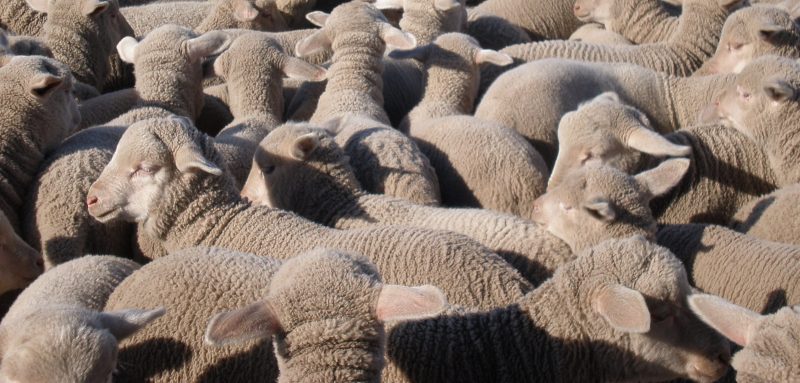Reproductive performance plus in South Australia
FERTILITY – THE ULTIMATE PROFIT DRIVER
“Fertility is one of the main drivers for profit in the sheep flock, and certainly a key measure in assessing flock reproduction and genetic improvement in studs.”
NEVILLE & CELIA KERNICK South East, SA
FOR any prime lamb business, the financial equation is quite simple – the more lambs born each year the more lambs there are to sell.
South East SA farmers Neville and Celia Kernick are heading in the right direction, lifting their marking percentages at Rangefield, Field, by 14 per cent. They are really pleased with the high fertility, extra growth and carcass attributes of the breed.
The top Dohne ewe lambs are retained for breeding purposes and the older Dohne ewes are mated to White Suffolks.
The enthusiastic couple marked 127pc lambs from the Dohne ewes, run as a self-replacing flock, and 126pc for the Dohne ewes joined to White Suffolks. Another key to their flock’s improved fertility has been through genetics, buying rams with high maternal reproductive rates.
“We keep an eye on all the Australian Sheep Breeding Values but in particular we look at high eye muscle depth in an attempt to lift our dressing percentages, high weaning weights and the maternal reproductive rates,” Mrs Kernick said. “We will continue to push as high as we can with our reproductive rates while still closely managing our ewes.”
COLIN BLACK Laura, SA
SOUTH AUSTRALIAN farmer Colin Black first introduced Dohne rams to his livestock program about five years ago, and was immediately impressed with the results.
He has since completed the transition from Merino to Dohne rams and has reported a 20 per cent increase in lambing rates. The two, three and four-year-old ewes mated to Dohne rams and the older ewes are mated to White Suffolk rams – a practice Mr Black has continued from his time running Merinos.
“Five years ago I mated one mob to Dohne rams because I wanted to plain down a bit,” he said. “I put a different colour tag in the Dohne lambs at tailing so I could tell the difference between them and the Merinos. All the Dohne and Merino lambs were treated the same and run together in the same mob when weaned.”
“When the lambs were crutched before shearing, the Dohne lambs were a lot heavier and were much better doers than the pure Merino lambs. When I pulled out my top 100 wethers to sell in-wool, 70pc of the top 100 were Dohnes, even though just one-third of all the lambs were Dohnes.”
Mr Black had planned on gradually introducing Dohnes across the property, but the first year results inspired him to make the switch sooner.
“I was going to do one mob to Dohnes each year and do the change slowly, but after that I decided it’d be easier to do it all at once and I was confident the results would be there,” he said.
“In doing so I have increased my lambing by 20pc, and they are a more robust and quicker maturing lamb than the Merino. I think that Dohne lambs utilise feed better when things are tough, so our ewes stayed in good condition all summer.”
“Dohne lambs are also definitely stronger at birth – I’m sure that’s what has helped us up our lambing percentage.”












 Facebook
Facebook YouTube
YouTube Instagram
Instagram